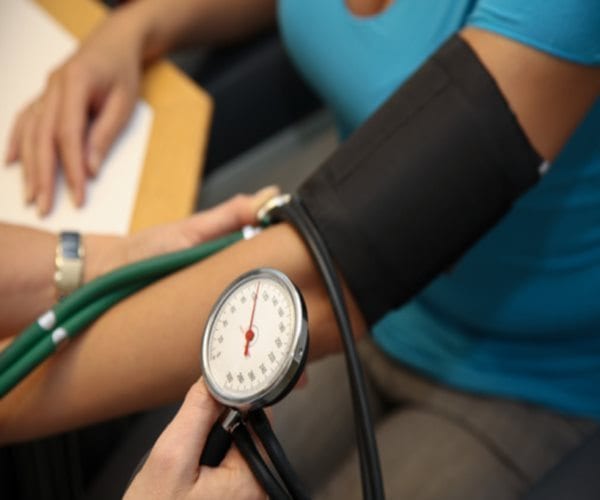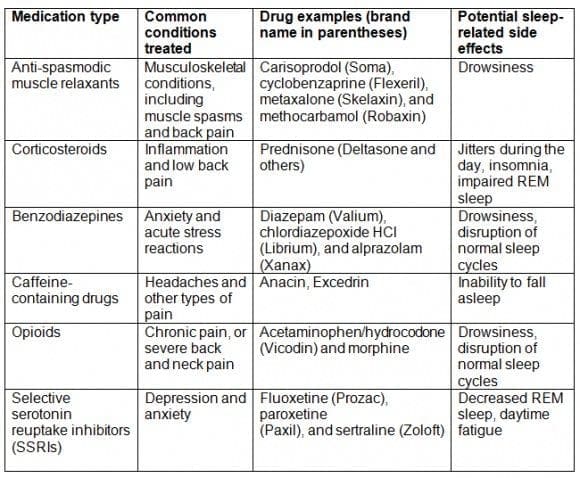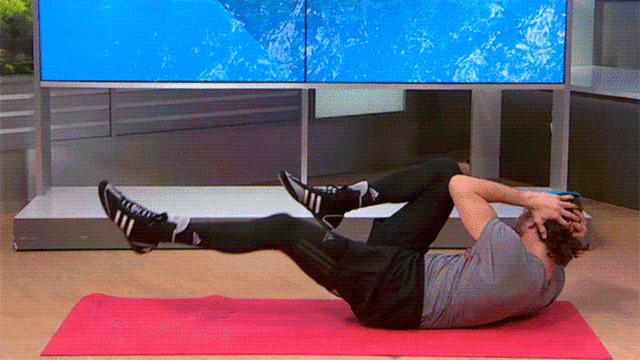Wellness
Clinic Wellness Team. A key factor to spine or back pain conditions is staying healthy. Overall wellness involves a balanced diet, appropriate exercise, physical activity, restful sleep, and a healthy lifestyle. The term has been applied in many ways. But overall, the definition is as follows.
It is a conscious, self-directed, and evolving process of achieving full potential. It is multidimensional, bringing together lifestyles both mental/spiritual and the environment in which one lives. It is positive and affirms that what we do is, in fact, correct.
It is an active process where people become aware and make choices towards a more successful lifestyle. This includes how a person contributes to their environment/community. They aim to build healthier living spaces and social networks. It helps in creating a person’s belief systems, values, and a positive world perspective.
Along with this comes the benefits of regular exercise, a healthy diet, personal self-care, and knowing when to seek medical attention. Dr. Jimenez’s message is to work towards being fit, being healthy, and staying aware of our collection of articles, blogs, and videos.

by Dr Alex Jimenez DC, APRN, FNP-BC, CFMP, IFMCP | Exercise, Fitness, Weight Loss
The problem: When I gain weight, it goes straight to my middle
You know those squishy midsection lumps you can pinch? That’s subcutaneous fat, located just beneath the surface of your skin, says Ursula White, PhD, an obesity researcher at the Pennington Biomedical Research Center at Louisiana State University. Another type of fat, called visceral fat, sits deep within the abdominal area, surrounding the organs. This is the kind that’s considered especially harmful; research has found that excess amounts of visceral fat may put your at a higher risk of heart disease and type 2 diabetes.
Where we pack on flab may be determined by genetics, says White. But in general, notes Tara Collingwood, RDN, coauthor of Flat Belly Cookbook for Dummies ($23; amazon.com)�when people gain weight, it often increases their amount of visceral fat. That’s one reason a diet that’s too high in simple carbs is so problematic: “Eating too many low-fiber, high-sugar foods can spike levels of insulin, which then stores all those calories as fat,” explains Collingwood.
The solution:�You can’t fight genetics�but you can make it harder for your body to store excess calories as fat by limiting your consumption of refined carbs. Eat more high-fiber foods instead, such as oats, beans, and sweet potatoes, suggests Leslie Bonci, RDN, owner of Active Eating Advice. Also, aim to eat three meals and one snack a day�and have them on a set schedule, recommends Bonci. One 2014 study found that eating erratically was linked to a bigger waist circumference than sticking to a schedule.

by Dr Alex Jimenez DC, APRN, FNP-BC, CFMP, IFMCP | Natural Health, Wellness
Pregnant women should get their blood pressure checked at each prenatal visit to screen for preeclampsia, a potentially fatal complication that can damage the kidneys, liver, eyes and brain, new U.S. guidelines say.
While many doctors already monitor blood pressure throughout pregnancy, the U.S. Preventive Services Task Force (USPSTF) updated its guidelines for the first time since 1996 to stress that screening at every visit can help doctors catch and treat preeclampsia before it escalates from a mild problem to a life-threatening one.
“Preeclampsia is one of the most serious health problems affecting pregnant women,” task force member Dr. Maureen Phipps, a women’s health researcher at Brown University in Providence, Rhode Island, said by email.
“Because this condition is common and critical, the Task Force offers two separate recommendations to help women lower the risk associated with preeclampsia – screening for preeclampsia is recommended for all pregnant women, and women at high risk of developing the condition can take low-dose aspirin to help prevent it,” Phipps added by email.
The screening recommendations, published on Tuesday in JAMA, apply to women without a history of preeclampsia or high blood pressure. Separate guidelines advise low-dose aspirin after the first 12 weeks of pregnancy for women with a history of elevated blood pressure. (http://bit.ly/2oIwP5B)
Preeclampsia can progress quickly, and typically develops after 20 weeks of pregnancy. Blood pressure screening earlier in pregnancy can show normal results for women who go on to develop preeclampsia.
In addition to elevated blood pressure, women with preeclampsia may also have excess amounts of protein in their urine, as well as swelling in the feet, legs and hands.
Women may suffer from stroke, seizures, organ failure and in rare cases, death. For babies, complications include slower growth inside the uterus, low birth weight and death.
Risks for preeclampsia include a history of obesity, diabetes, kidney disease, lupus or rheumatoid arthritis, as well as a mother or sister who has experienced the condition.
Because the risks of preeclampsia increase with age, women may be able to lower their chances of developing this complication by having babies sooner, said Dr. Dana Gossett, an obstetrics and gynecology researcher at the University of California, San Francisco, and co-author of an accompanying editorial in JAMA.
“Beyond that, it is also important to ensure that all health problems are well managed prior to pregnancy,” Gossett said by email. “High blood pressure should be under good control, other diseases like kidney disease or lupus should be well controlled, and women should try to be close to their ideal body weight prior to conception.”
Checking blood pressure at every prenatal visit can help prevent complications for mothers and babies alike, said Dr. Martha Gulati, chief of cardiology at the University of Arizona College of Medicine in Phoenix and author of a separate editorial in JAMA Cardiology.
“This is something that should be provided to every woman as part of preventive care,” Gulati said by email. “We will save lives and prevent complications and death in pregnant women with this simple, cost-effective” test that doesn’t take much time.

by Dr Alex Jimenez DC, APRN, FNP-BC, CFMP, IFMCP | Chiropractic, Lower Back Pain, Natural Health
El Paso, TX. Chiropractor Dr. Alex Jimenez looks at back pain medications and their effect on sleep.
Can you relieve spine pain and get a good night�s rest? Sure some drugs get in the way.
Prescription medications are among the most recommended nonsurgical treatments for back and neck pain. While these drugs might help alleviate what ails your back, your sleep may suffer because of this. That�s a big deal, as sleep deprivation hurts your general wellbeing.
Unfortunately, back and neck pain medications can have side effects�and interfering with your sleep and ability to operate normally throughout the day are ones that are typical. Your medication may stop you from getting enough sleep or falling asleep. Or, your slumber quality suffers, although you might doze off readily. Plus, sleep-related side effects do n�t just affect you during the nighttime hours, as you may experience drowsiness or jitters during the day.
Sleep Science 101: Reconsidering Sedatives
Before delving into common back and neck pain drugs that may affect your slumber, it�s important to comprehend one of the biggest misconceptions about sleep medicines: the effect of sedation.
Many view sedatives as sleep aids due to the fact that they enable you to fall asleep fast. Nevertheless, this doesn�t tell the entire image, based on Steven A. King, MD, MS, who practices pain medicine in New York and is a clinical professor of Psychiatry at the New York University School of Medicine.
�When contemplating what�s good for sleep, it really is vital to not forget that sleep is just not a uniform activity through the entire span of the night, but rather, a succession of cycles involving different levels of wakefulness,� wrote Dr. King in a site for Psychiatric Times. �Merely because a medication may put one to sleep doesn�t mean restful slumber will be provided by it if it disrupts the normal sleep cycles.�
During a good night�s sleep, your brain will repeatedly cycle through five phases: stages 1, 2, 3, 4, and rapid eye movement (REM) sleep. You should spend about 25% of your total slumber and this is the cycle. As researchers believe it contributes to regulating your mood, learning, and saving memories having uninterrupted REM sleep is significant.
Monitor your sleep quality, if you�ve been prescribed a medicine with sedative effects, for example an opioid. It�s not about how fast you fall asleep but also how refreshed you feel the very next day. If you dazed and �re waking up groggy, talk to your doctor about possible alterations to your medication regimen.
Back &�Neck Pain Medications That May Disrupt Sleep
Below are drugs that treat spinal conditions and may likewise have sleep-associated side effects.
Note: The table below features common back and neck pain medications that could interfere with your sleep and daytime functioning; it is not an all inclusive list. Always discuss the potential side effects of your medications that are certain with your physician.

Talk To Your Doctor About Drug Alternatives For Better Sleep
The quality of your slumber shouldn�t suffer�as a result, although keeping your spine healthy is vital. If you�ve detected a decrease in quality or quantity of sleep since beginning your back or neck pain medicine, tell your physician. She or he might prescribe an alternative drug or treatment while addressing your spinal issue to restore healthful sleep.

Call Today!

by Dr Alex Jimenez DC, APRN, FNP-BC, CFMP, IFMCP | Fitness, Health, Wellness
Throwing punches in the ring is only part of the reason why professional boxers have knockout bodies. They also sculpt their strong physiques with tons of cross training—with a focus on building a rock-solid core. “Core conditioning is crucial for boxing,” says Chris Algieri, a professional boxer and two-time world champion. “Most of the power in a punch comes from being able to forcibly rotate your core, giving the strike explosive power.”
A sturdy core also helps keep a boxer’s body safe during a match. “The boxer has to be able to take blows to the body without damaging their ribs and organs,” explains Algieri. “The muscles in the abdominals and obliques act as body armor against opponents’ attacks.”
You don’t have to be a pro fighter to reap the ab-chiseling benefits of a boxer’s training. In the video above and in the gifs below, Algieri demonstrates his go-to conditioning exercises for a strong, stable core that’s ready to roll with the punches.
Bicycle crunches
This move is great for boxers because it focuses on core stability, while also rotating the shoulders and incorporating the lower body. Plus it’s an athletic movement that hones coordination.
What to do: Begin by laying on your back with hands behind head, then alternate bringing each elbow to the opposite knee, while maintaining a tight core. Do 10-20 continuous crunches with each elbow. Rest and then repeat 2-3 times.
Side plank

This is a key exercise for a boxer, since the movement promotes both core stability and shoulder girdle strength—crucial for throwing those strong punches.
What to do: Turn to one side with your legs extended and your feet and hips planted on the ground. Now, put your elbow under your shoulder and push your abs and hips up until the top of your body forms a straight line. Hold for 30-60 seconds. Return to the starting position, then move to the other side and repeat.
RELATED: Whittle Your Waist With These 5 Core Exercises
Alternating hands plank

This is an awesome move that challenges balance and coordination, as well as core strength.
What to do: Start off in a plank position. With your weight resting on your left forearm, slowly lift your right arm off the ground, reaching it out in front of you. Lower back down, and alternate to the left arm. Do this 10 times with each arm.
T-push-up

The T-push-up will help you build core stability, as well as posterior shoulder strength and flexibility. Boxers experience a lot of wear and tear on the shoulder, so it’s important to strengthen each part of the shoulder. Plus, the push-up works the anterior deltoid, which is important for movement and power when punching forward.
What to do: Begin in a standard push-up position. Lower your body slowly, as you would for a regular push-up. But as you push yourself up, turn to one side, raising that side’s arm towards the ceiling. Return your hand to the floor, then repeat on the other side. Do this 15 times on each side.
RELATED: 4 Ab-Sculpting Plank Variations
Alternating leg with ball pass + seated underhand pass

This exercise really works your lower abdominals and also promotes full-body coordination. Boxers will often explode out of a crouched position, so it’s important to have strong lower abs to support this movement. And the second part, seated underhand pass, uses isometric holds to promote core strength and stability. Plus it hones the hand-eye coordination necessary to be a great fighter.
What to do: From seated position with feet off the ground, squeeze your abs and pull knees in as you pass a weight (or medicine ball or an imaginary object) under your bent leg. Repeat 20 times.
Accordion side crunch

This isometric hold promotes core strength, while the crunch tones your obliques and increases endurance. It’s also another move that promotes coordination between the upper and lower body.
What to do: From side position, simultaneously crunch and pull knees in, keeping feet off the floor and focusing on your obliques. Repeat this 15-20 times.
Russian twist

This classic ab move will improve your core rotational strength, which is important for maximizing power when throwing a punch.
What to do: Starting in a seated position, explosively twist from one side to the other. Aim to twist to each side 15-20 times.
Sit-up with a twist

This is a full-core movement, which works you upper and lower ab muscles in the initial sit-up, then fires up your obliques during the twist. Similar to Russian twist, this sit-up variation strengthens rotational core movement and improves your ability to generate power from the core (aka the essentials for throwing a punch.)
What to do: Starting on your back, roll up into a sit-up, with one leg extended and one foot pressed into the floor, knee bent. From here, explosively twist to the side, bringing your opposite elbow to the bent knee. Do this 15-20 times, then switch to the other side.

by Dr Alex Jimenez DC, APRN, FNP-BC, CFMP, IFMCP | Diets, Fitness
When you’re on a diet, you may gravitate to the “diet” food section at the supermarket, but beware: Diet foods can destroy your diet and make you fat. Although labeled “diet” or “low-fat,” they may be high in sugar and can make you gain weight, not lose it.
Researchers from the University of Georgia fed rats a diet high in sugar but low in fat that was meant to imitate many popular diet foods, and found that the animals gained weight when compared to rats fed a balanced rodent diet.
In addition, the high-sugar diet induced a host of medical problems, including liver damage and brain inflammation.
“Most so-called diet products containing low or no fat have an increased amount of sugar and are camouflaged under fancy names, giving the impression that they are healthy, but the reality is that those foods may damage the liver and lead to obesity as well,” said the study’s principal investigator, Krzysztof Czaja.
“What’s really troubling in our findings is that the rats consuming high-sugar, low-fat diets didn’t consume significantly more calories than the rats fed a balanced diet,” said Czaja, an associate professor of veterinary biosciences and diagnostic imaging in UGA’s College of Veterinary Medicine.
“Our research shows that in rats fed a low-fat, high-sugar diet, the efficiency of generating body fat is more than twice as high — in other words, rats consuming low-fat high-sugar diets need less than half the number of calories to generate the same amount of body fat,” he said.
Researchers divided rats into three groups and monitored their body weight, caloric intake, body composition, and fecal samples over a period of four weeks. One group consumed a diet high in fat and sugar, another group was fed a low-fat, high-sugar diet, and a third group was given a balanced or “normal” diet.
Both the low-fat, high-sugar and high-fat, high-sugar groups showed significant increases in both body weight and body fat when compared to the balanced group. They also showed an increase in liver fat.
The accumulation of liver fat in the high-sugar, low-fat group, Czaja said, “is a very dangerous situation, because the liver accumulating more fat mimics the effect of non-alcoholic fatty liver disease.”
Non-alcoholic fatty liver disease is caused by fat buildup in the liver. Serious forms of the disease can cause liver damage similar to that caused by heavy alcohol use.
The two high-sugar diets also caused chronic inflammation in the intestinal tract and brain. Previous studies found that the brain inflammation changed signals in the brain that controlled the ability to determine when one is full.
“The brain changes resulting from these unbalanced diets seem to be long term, and it is still not known if they are reversible by balanced diets,” Czaja said.
Previous studies have shown other problems with low-fat diets. A study published in the Journal of Affective Disorders linked low-fat diets with depression. Low-fat diets have also been linked to heart disease. One study found that diets low in fat lowered the body’s level of HDL — the “good” cholesterol that helps protect against heart disease.

by Dr Alex Jimenez DC, APRN, FNP-BC, CFMP, IFMCP | Diets, Fitness
Seattle, take a bow. Jackson, hit the gym. A new study ranking the nation�s 100 fattest cities has found residents of the Mississippi city topped the scales nationally, while Jimi Hendrix�s hometown has the smallest proportion of overweight residents.
The analysis, by Wallethub.com, found that 70 percent of Americans aged 15 and older are overweight or obese � in line with statistics compiled by the Centers for Disease Control and Prevention. But some cities are more likely to have more residents who hit those thresholds than others.
On balance, the south tended to rank higher in the new study, which has historically been the case, while residents of colder, northern states and the Pacific Northwest fared better.
Dr. Charles Platkin, director of the New York City Food Policy Center and Distinguished Lecturer at Hunter College, City University of New York, tells Newsmax Health the new rankings aren�t entirely surprising but bring attention to regional factors that may play a role in U.S. obesity trends.
“There isn’t any major new information here,” Platkin explains. “There are a lot of variables that go into diet and obesity, including poverty levels, and diet and culture of southern states, for instance.”
The 10 fattest cities on the new list tended to be southern:
- Jackson
- Memphis, Tenn.
- Little Rock, Ark.
- McAllen, Texas
- Shreveport, La.
- Chattanooga, Tenn.
- Mobile, Ala.
- Lafayette La.
- Winston-Salem, N.C.
- Knoxville, Tenn.
At the other end of the spectrum, researchers found the following 10 cities to be on the lowest end of the �obesity� scale:
- Seattle-Tacoma-Bellevue, Wash.
- Portland, Ore.
- Minneapolis-St. Paul, Minn.
- Denver and Colorado Springs, Colo.
- Boston-Cambridge, Mass.
The researchers, as well as the U.S. Department of Agriculture, suggested a variety of factors play a role in U.S. obesity trends. Among them:
Regional variations in diet. The south is famous for barbecue, fried foods, and sweet tea; northern and coastal cities may offer a wider range of healthy options of vegetables, whole grains, and fruits. These differences in dietary patterns are influenced by social, demographic, cultural, historical, and economic factors
Poverty. Economic factors play a role in food choices and activity levels. According to the USDA, 42.2 million people live in households where access to healthy foods is limited, often because of poverty-related issues. In such households, families may not be able to afford to eat regular, balanced, healthy meals, or may turn to less-healthy alternatives to save money. Such households are more prominent in the south than the northeast, the west, and the Midwest.
Education. Schooling and personal achievement, uncertainty about jobs, and even access to good grocery stores also factor into food choices linked to obesity rates.
Activity, exercise trends. Northern metropolitan cities and other areas, such as the Denver area, that are popular places for healthy physical activities � such as hiking, skiing, and other outdoor sports � tend to rank lower in obesity scores.
Shopping habits. The shopping and dietary habits of people who participate in the Supplemental Nutrition Assistance Program (SNAP), formerly known as Food Stamps, are other factors. Most households receiving SNAP benefits, according to the USDA, don�t consume the same quantities of fruit, whole grains, and other healthy foods as people who aren�t on receiving food assistance.
USDA research has shown that 11 states � located along the western and southern borders of the country plus the District of Columbia � have higher-than-average levels of poverty and more people receiving SNAP benefits. These factors explain, at least in part, the prevalence of obesity across southern states. There is a higher level of food insecurity and greater use of SNAP benefits.
Platkin notes the survey rankings don�t aim to solve the nation�s obesity crisis, but they could inform aggressive promotions and education � similar to what Americans have done with in past public health campaigns, such as those aimed at tobacco use.
“Look at things we have done successfully, like smoking cessation and recycling,” he says.
Culturally significant programs like food access and cooking classes might make a difference in regions of the country where obesity rates are especially high, he adds.
Combatting poverty could also lead to improvements in diet and activity levels in some cities.
“Culturally, what are the diets, how much outdoor appeal is there, physical activity, and what about binge drinking in these areas?� he says.
To check out the complete list of the nation�s 100 fattest cities, check out Wallethub.com.

by Dr Alex Jimenez DC, APRN, FNP-BC, CFMP, IFMCP | Anti Aging
Researchers in the USA have developed an ingenious system that uses virtual reality to help prevent falls by detecting and reversing balance impairments in elderly people.
The sense of balance declines in elderly people, as well as in those with neurodegenerative diseases such as multiple sclerosis. This leads to greater reliance on visual cues to maintain balance and prevent falls.
Researchers from the University of North Carolina at Chapel Hill (UNC) and North Carolina State University (NC State) developed a system to recreate the visual illusion of losing balance, tested on volunteers walking on a treadmill. The participants walked on machines set up in front of a large screen depicting a moving hallway.
“As each person walked, we added lateral oscillations to the video imagery, so that the visual environment made them feel as if they were swaying back and forth, or falling,” explains study co-author Jason R. Franz.
The researchers used 14 cameras to record the positions of 30 reflective markers on each volunteer’s legs, back and pelvis.
In response to visual disruptions and perceived loss of balance, the volunteers took longer or shorter steps, as the scientists expected. Their head and trunk swayed further sideways with each step. The variability of these measures — their tendency to change from one step to the next — increased much more significantly.
During the experiment, the researchers analyzed muscles’ ability to respond to perceived loss of balance and identified which muscle groups worked to correct it. The researchers found that individual muscles were highly coordinated in preserving walking balance.
The scientists’ data provide important reference measurements that could be used in future clinical procedures to detect balance impairments before they start to cause individuals to fall.
This kind of system could be used as a therapeutic tool to help teach balance-impaired individuals how to improve their balance and avoid falls.
According to the study, falls lead to the hospitalization or death of hundreds of thousands of elderly Americans every year.
The study is published in the journal Nature Scientific Reports.




















